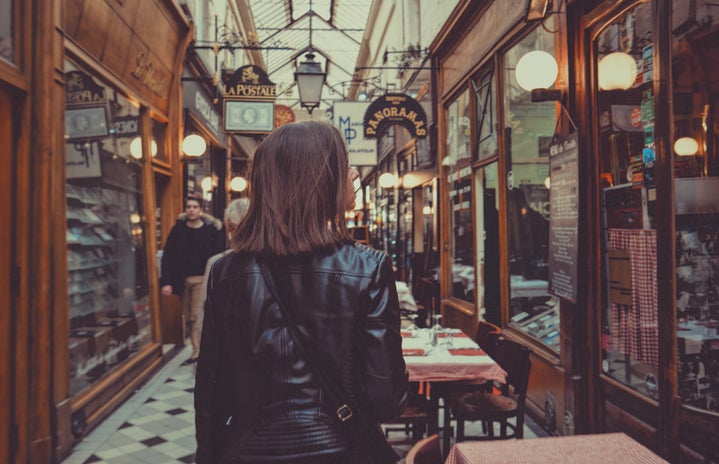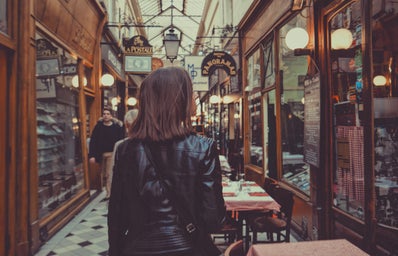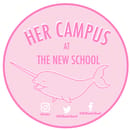The lights flicker, the floors are bare, and shirts with ripped seams cover the floor. Excited teens once dug through overstuffed racks here, but now every window of Forever 21 boasts a bright red sign: “Store Closing.”
More than 12,000 brick-and-mortar stores closed in 2019, according to Coresight Research, an advisory firm analyzing fashion retail. This comes as little surprise as online shopping has taken over and companies worry about the future of physical shops. While legacy retailers like Forever 21 are shutting their doors, online brands are opening storefronts of their own. Physical retail isn’t dying, but rather shifting beneath our feet.
Social media has changed the way people shop, users can discover new brands and make purchases straight from Instagram. Coresight Research reported 8 in 10 US shoppers purchase products they discover on social media. “Social media influencers have a lot of sway over consumers,” said Marie Driscoll, a financial analyst at Coresight. “They start trends and determine what’s cool.” Though social media has done great deeds for retail, it’s also raised questions about authenticity.
“The issue is that the people we follow online are being paid to promote different products. It brings down that level of trust. Consumers question if influencers actually love a product or really use it. The discovery mechanism is still there, but the trust factor has gone out the window,” said Katie Hunt, co-Founder of Showfields, a modern retail space, calling itself ‘the most interesting store in the world.’ It displays an array of online brands in their own mini storefronts that are inside the larger store, rotating out every six months.
Located on the bustling corner of Lafayette and Bond Street in Manhattan, Showfields is an example of where brick-and-mortar is headed. Today’s generation of young shoppers have grown bored of traditional store concepts. Malls, department and big-box stores that feature a fixed lineup of brands pay no mind to customer experience. The whole point of retail today is not necessarily to sell products, but to sell an experience.
Showfields’ Instagram-friendly interior and unique aesthetic consists of eye-popping displays, selfie-mirrors, and colorful accent walls. In one room, mysterious structures protrude from a wall that look like a cross between an octopus’ tentacles and drops of melting ice cream. This is part of the immersive, free, 20-minute-long theater performance, beginning when customers go behind a bookshelf and down a slide. At the bottom of the slide, they end up in a forest outside of a house. Customers tour the house where they meet actors and travel through different rooms, each featuring art and sculptures by emerging artists. The products displayed correspond to the room themes. In the kitchen, customers learn about (Re)Zip reusable plastic bags, and in the bathroom they can test Nuria skincare products.
Co-founder Hunt said, “The immersive experience lets us break the wall with the consumer, bringing them to a place where they feel comfortable trying new things.” Hunt believes that customers are more inclined to make a purchase after creating a personal connection and trying a product beforehand. “If I’m walking down a store aisle, and I see a product amongst everything else, and I have no knowledge of it, I’d be hesitant about giving it a try. People need physical locations because they want that trust factor of touching and seeing brands in person.”
Coresight Research found that online brands are saving money when displayed in pop-up or concept shops. Rather than paying a year’s worth of rent, they only commit to a few months. Financial analyst Marie Driscoll said, “Brands normally pay 25 to 30 percent of their sales to attract customers via social media, and influencer marketing can be expensive. It used to be free to advertise on Facebook and Instagram, but not anymore. Brands who want to save money are entering physical stores where their company can get just as much, or even more, exposure.”
According to Fast Company Business, brands in Showfields pay a subscription fee between $6,000 and $12,000 a month which includes staffing, inventory, management, and sales data. Opening a store in Manhattan could cost more than $25,000 a month, according to real estate platform Agorafy. It’s also cheaper than social media marketing which can cost up to $20,800 a month, reported by marketing agency, Linqia.
41 Winks, a sleep accessories and eye mask company, is one of the many online retailers who has been featured in Showfields. “Navigating the digital landscape was really tough and it was hard to gain digital customers. We realized that our products sell so much quicker and easier when people see them in person,” said Olivia White, CEO of 41 Winks. “We’re not in a position to have our own brick-and-mortar, so getting to work with Showfields was really awesome. We can interact with customers and gain more physical exposure which has definitely grown our brand awareness.”
In the bedroom of the Showfields house, 41 Winks products are displayed for customers to try as actors educate them on the brand. Their mission is to make sleep fun and teach people that self-care and rest are not trendy, but necessary. Their masks are crafted to inspire, made of super-soft cotton-sateen and stamped in gold sayings like “Block Out The Haters,” and “Girl Power.” Check out 41 Winks online and on Instagram @41winks!
Retail is changing, and fast. Despite the seemingly irreversible rise of online shopping, the future of brick-and-mortar isn’t completely dim. For many, it’s a matter of adapting to trends and creating more than just a place to shop.



